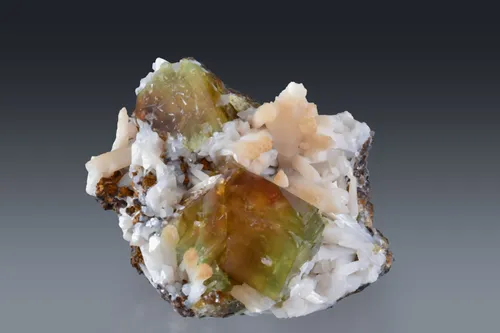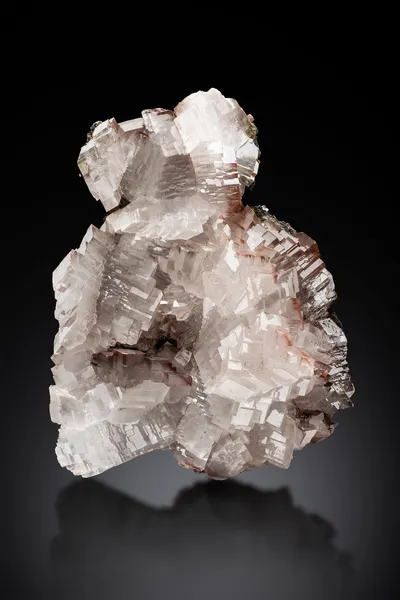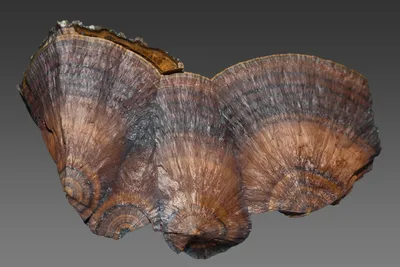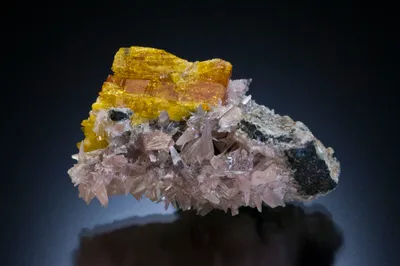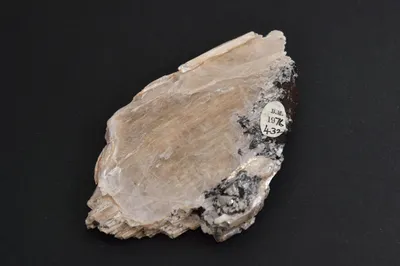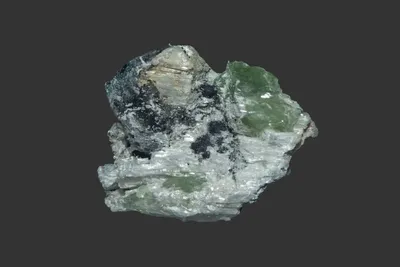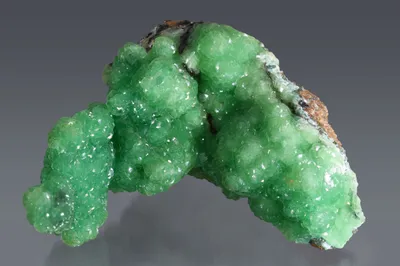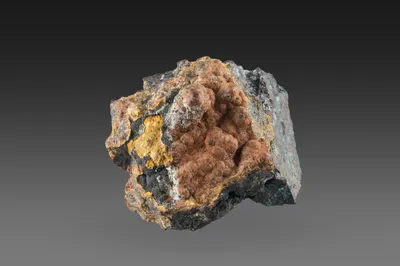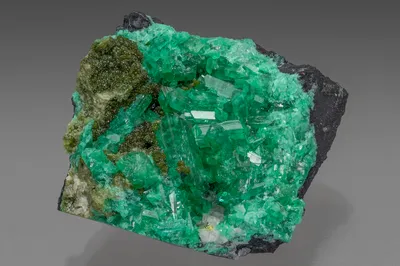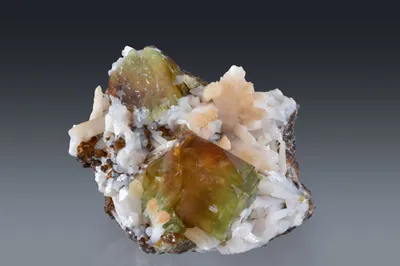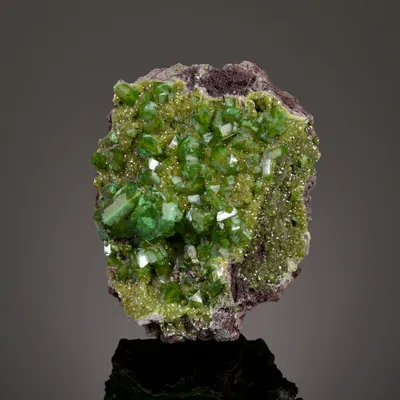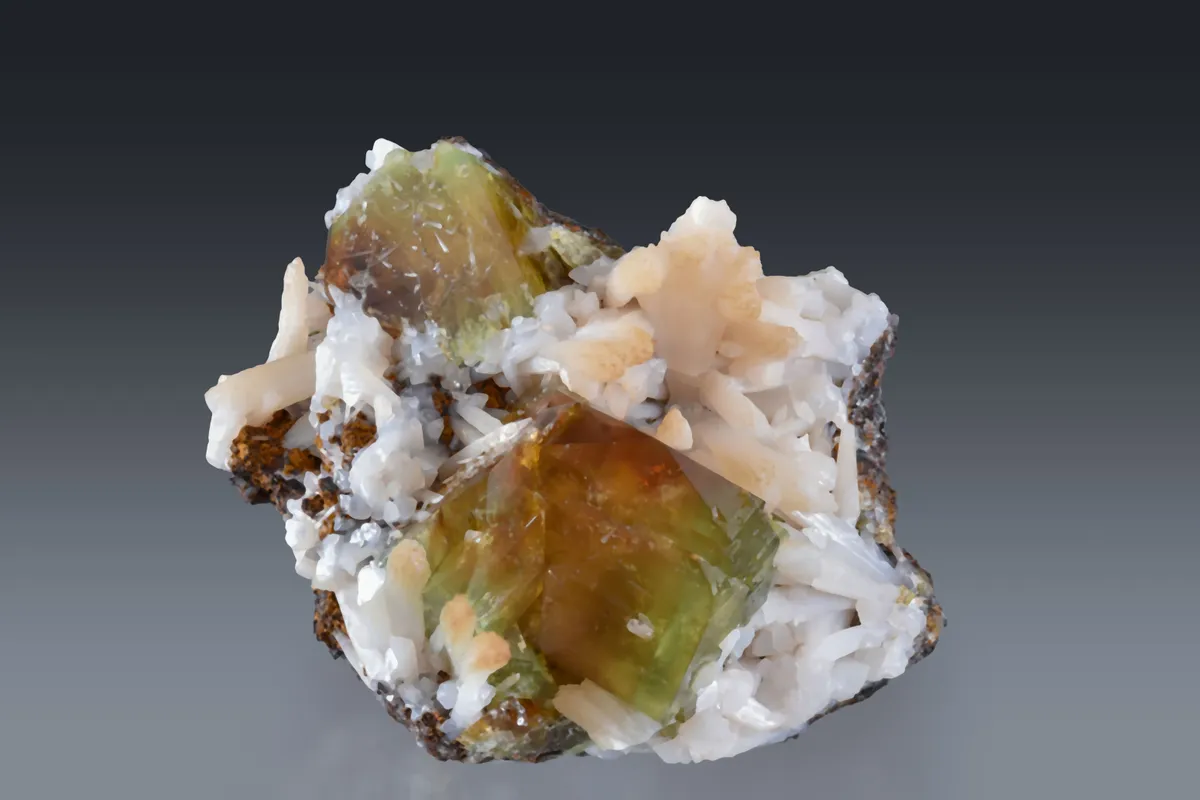
Image Credit: Malcolm Southwood
Mineral Species
Adamite
Type Locality
No
Composition
Zn2(AsO4)(OH)
Crystal System
Monoclinic
Status at Tsumeb
Confirmed
Abundance
Somewhat rare
Distribution
First, second and third oxidation zones
Paragenesis
Supergene
Entry Number
Species; TSNB3
General Notes
Although the adamite-olivenite series is well-represented in all three oxidation zones, end-member adamite is considerably less abundant than either zincolivenite or olivenite.
Adamite, is the zinc-dominant end-member of the adamite-olivenite solid solution series and is defined as having a Zn:Cu ratio exceeding 75:25. At Tsumeb, end-member adamite was relatively rare, although crystals to 37 mm (on smithsonite) have been reported (Von Bezing et al. 2014). On the other hand, adamite with some degree of copper substitution (often informally referred to as cuproadamite or cuprian adamite), is widespread at Tsumeb, particularly in the second oxidation zone (see zincolivenite section).
Adamite, sensu stricto, was very rare in the first oxidation zone. The occurrence of cobalt-bearing adamite, however, is particularly notable. A specimen in the Karabacek Collection (#4318) at Harvard University (MGMH 93828) comprises a druse of intergrown adamite crystals (to 7 mm) with brownish-green terminations. Broken surfaces reveal a rose-pink to plum coloured interior due to the minor presence of cobalt. A quantitative analysis of similar material showed the composition to be near end-member adamite with < 2 mol % Cu and a Co content of only 540 ppm to which the colour is believed to be due (Southwood et al. 2020).
Key (1977) commented that
"This mineral [adamite] has been found intermittently over the years at Tsumeb, but almost never in exceptional specimens until a few months ago when several superb specimens were recovered: the best is a single bright yellow crystal 11/4 inch in length, with an attached 3/8-inch spray of opaque white smithsonite crystals…".
This find was almost certainly from the second oxidation zone, although the exact location was not recorded.
In the third oxidation zone, very unusual white, needle-like crystals of adamite occurred with leiteite and legrandite in the so-called "Zinc Pocket", on 44 Level. Paradamite, the triclinic dimorph of adamite, is also present in this paragenesis.
Keller (1977a) noted that zinc-rich members of the series, adamite and cuproadamite [= zincolivenite] have a wider range of associated secondary minerals than the copper-dominant olivenite. Most of Keller’s comments on paragenesis are based on his observations of cuproadamite and are reviewed in the zincolivenite section.
Associated Minerals
arsenohopeite; beaverite-(Cu); calcite; cerussite; chalcocite; claudetite (?); conichalcite; duftite; feinglosite; gaitite; gerdtremmelite; goethite; helmutwinklerite; hemimorphite; hidalgoite; hörnesite; hydrozincite; ianbruceite; keyite; koritnigite; köttigite; leiteite; legrandite; ludlockite; metazeunerite; mimetite; naumannite (?); olivenite; paradamite; prosperite; quartz; reinerite; scorodite; skorpionite (?); smithsonite; tennantite-(Zn); tsumcorite; wilhelmkleinite; willemite; zincolivenite
Pseudomorphs
Adamite has been reported to form pseudomorphs after olivenite (rare; Gebhard, 1999).
